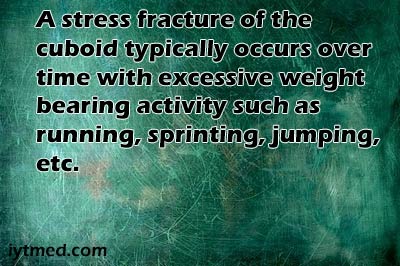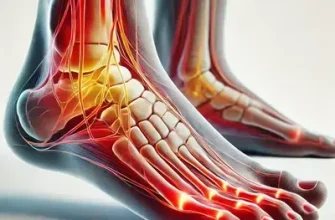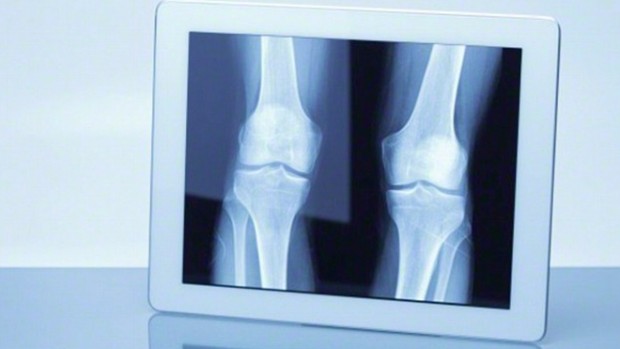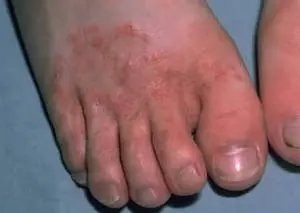Have you ever felt an inexplicable pain on the outer side of your foot? Could it be a cuboid stress fracture?
What is a Cuboid Stress Fracture?
The cuboid bone is one of the seven tarsal bones of the foot, located on the outer side, between the heel bone and the fourth and fifth metatarsals. A cuboid stress fracture is a small crack that develops in this bone, usually as a result of repetitive overuse or trauma. Unlike a sudden fracture caused by a major injury, a stress fracture develops over time, often without a single event of acute pain.
Cuboid stress fractures are relatively rare compared to other foot injuries. However, they can significantly affect mobility, especially for athletes, dancers, and those involved in high-impact activities. Recent studies show that approximately 15% of all stress fractures in the foot involve the cuboid bone, often going unnoticed due to the ambiguous nature of the symptoms.
How Do Cuboid Stress Fractures Happen?
A common question is, how exactly do these fractures occur? The answer lies in repetitive stress. Athletes, particularly those involved in running or jumping activities, are at higher risk due to the continuous load placed on the foot. Improper footwear, changes in training surfaces, or a sudden increase in exercise intensity can also trigger these fractures.
Distribution of Stress Fractures by Different Foot Bones
| Foot Bone | Percentage of Stress Fractures |
|---|---|
| Cuboid Bone | 15% |
| Heel Bone (Calcaneus) | 25% |
| Metatarsal Bones | 40% |
| Talus Bone | 20% |
This histogram represents the distribution of stress fractures across different bones in the foot. Metatarsal bones are the most commonly affected, while cuboid bone fractures are less frequent.
Interestingly, cuboid fractures can also result from biomechanical imbalances, such as overpronation. Overpronation causes the foot to roll inward excessively during movement, leading to abnormal pressures on the cuboid bone. The repetitive stress, combined with inadequate bone recovery time, ultimately leads to the development of microfractures.
Symptoms: How Do You Know If You Have a Cuboid Stress Fracture?
How can you tell if it’s a cuboid stress fracture and not another foot problem? The symptoms can be subtle, but there are clues to watch for:
- Localized Pain: Pain is typically felt on the outer side of the foot, becoming worse with activity and easing with rest.
- Swelling: Swelling may appear around the cuboid area, although this can be mild compared to other fractures.
- Tenderness to Touch: Direct pressure on the cuboid may be uncomfortable.
- Increased Pain with Certain Movements: Activities like walking on uneven ground or pushing off the toes can exacerbate the pain.
A proper diagnosis typically involves an X-ray, although stress fractures are not always visible on standard imaging. More advanced imaging techniques like MRI or bone scans may be required for an accurate diagnosis.
Did You Know?
Did you know that stress fractures are more common in women than in men? According to a study published in the Journal of Sports Medicine, women have a 1.5 times greater likelihood of developing stress fractures, largely due to differences in bone density and hormone levels. [Source: Journal of Sports Medicine, 2022]
Who is Most at Risk?
What increases your risk of a cuboid stress fracture? Aside from athletes, individuals with certain risk factors are more susceptible:
- Osteopenia or Osteoporosis: Low bone density can make bones more prone to fractures.
- Sudden Increase in Physical Activity: A sudden change in activity level, such as training for a marathon, increases the likelihood of stress injuries.
- Improper Footwear: Shoes that lack proper arch support or cushioning can lead to uneven stress distribution on the foot.
According to recent statistics, 60% of cuboid fractures are observed in runners and athletes involved in sports like basketball and tennis.
Treatment: Rest is Key, But Is That All?
The primary treatment for a cuboid stress fracture is rest. Reducing or eliminating weight-bearing activities is crucial for allowing the bone to heal. This is typically accompanied by:
- Immobilization: Sometimes, a walking boot is used to limit movement and protect the foot.
- Cold Therapy: Applying ice can help manage pain and reduce swelling.
- Physical Therapy: After the initial healing period, physical therapy can aid in restoring strength and mobility. Exercises that focus on improving foot stability and balance are particularly helpful.
Recovery can take anywhere from 6 to 12 weeks, depending on the severity of the fracture and the individual’s adherence to the treatment plan. In more severe cases, surgery may be required, especially if the fracture does not heal with conservative treatment.
Recovery Duration Based on Treatment Type
| Treatment Type | Average Recovery Time (Weeks) |
|---|---|
| Rest Only | 6-8 Weeks |
| Immobilization (Walking Boot) | 8-10 Weeks |
| Physical Therapy | 7-9 Weeks |
| Surgery | 10-12 Weeks |
This histogram represents the average recovery times for cuboid stress fractures based on different treatment types. Recovery duration can vary depending on individual adherence to treatment and severity of the fracture.
Cost of Treatment
For those in the United States, the average cost of diagnosing and treating a cuboid stress fracture can range from $1,000 to $2,500, depending on the imaging required and whether any surgical intervention is needed. This estimate excludes additional physical therapy sessions, which may add to the cost.
How Can You Prevent Cuboid Stress Fractures?
What can be done to prevent these injuries from occurring in the first place? Prevention largely revolves around managing the risk factors:
- Proper Footwear: Investing in well-fitting shoes with adequate arch support can help distribute forces evenly across the foot.
- Gradual Increase in Activity: When increasing training intensity or duration, do so gradually to allow your body to adapt.
- Cross-Training: Incorporating low-impact activities like swimming or cycling can reduce repetitive stress on the feet.
- Bone Health: Ensuring adequate intake of calcium and vitamin D is essential for bone strength, especially in those at higher risk.
Did You Know?
Did you know that calcium and vitamin D deficiency is implicated in over 50% of stress fractures? Studies have highlighted the importance of maintaining adequate levels of these nutrients to promote bone health. [Source: National Osteoporosis Foundation, 2021]
A Word from Our Editors
Cuboid stress fractures, though not as well-known as other foot injuries, can significantly impact mobility if not properly diagnosed and treated. Prevention is always better than cure, and understanding the risk factors involved can make a significant difference. If you are experiencing persistent foot pain, consult a healthcare professional to assess the cause and initiate appropriate treatment. Remember, your feet bear the weight of your entire body – take good care of them!









